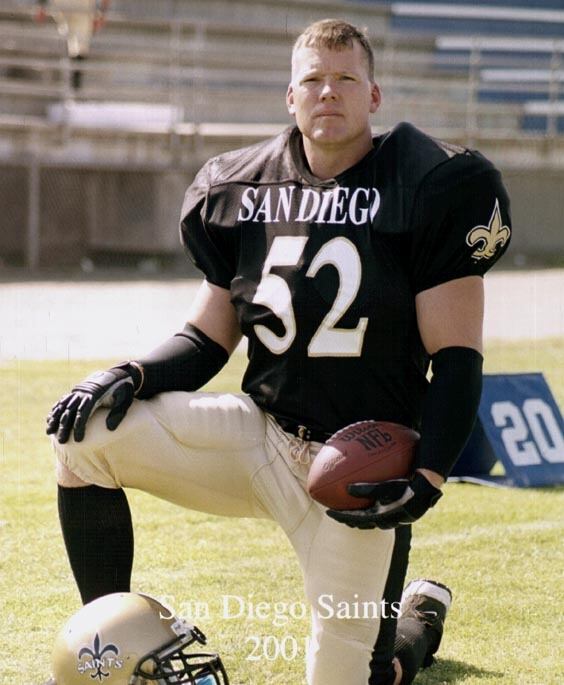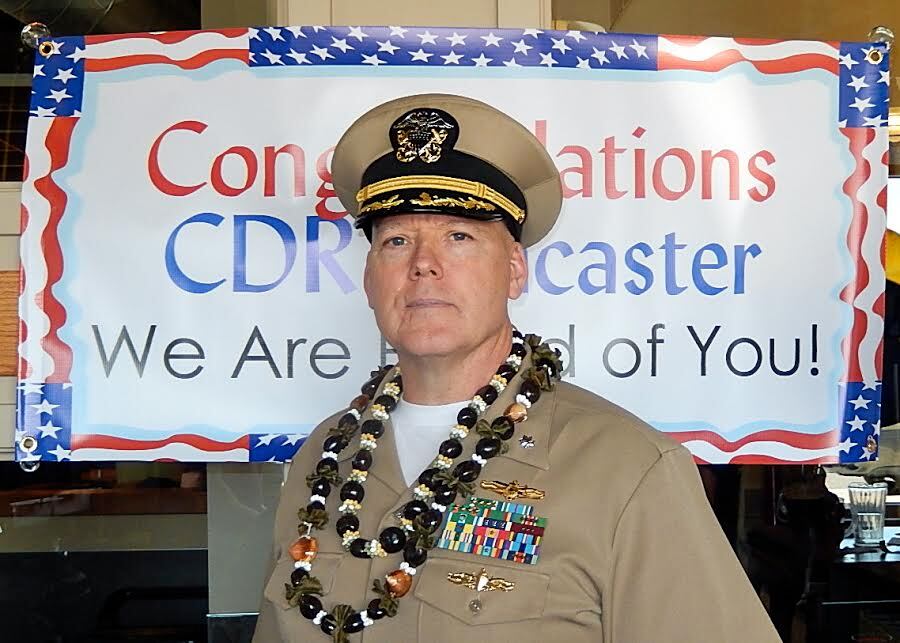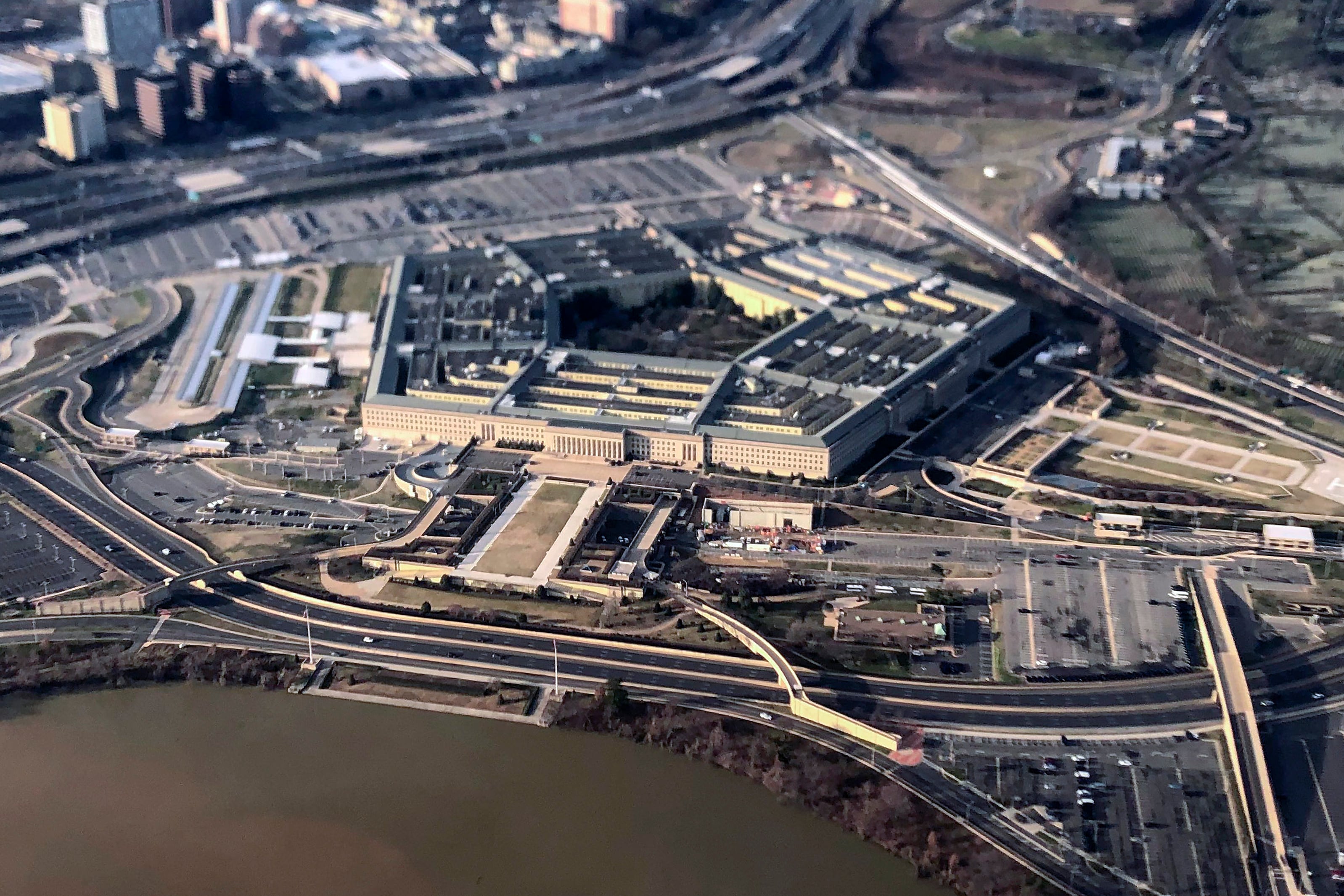If the Navy wants a fitter force, it has to be comprehensive, says a 33-year sailor with 16 years enlisted and 17 as an officer: Better access to healthy food, command PT and a fitness test that has something to do with the job.
That's according to a 33-year Navy vet who once information professional officer and former chief electronics technician, 51, did a stint as a command fitness coordinator during his enlisted years, on top of playing semi-professional football for the San Diego Saints and tackle football with the Marine Corps.
"It seems like nowadays, that kids that are coming in aren’t as fit as the people that came in at my age," Cmdr. Patrick Lancaster, 51, who served for 16 years as enlisted. n the branch chief of operations and plans for U.S. Africa Command, told Navy Times. "We did more active outside stuff, rather than gaming on the couch."
In response to a reader query, Lancaster offered his ideas for how Here's how he says the Navy can whip itself into shape:
Eating clean
More than anything else, Lancaster said, what you eat will determine how much you weigh — and many fitness experts agree.

Lancaster played semi-pro football with the San Diego Saints.
Photo Credit: Courtesy Cmdr. Patrick Lancaster
"You lose weight by cutting calories and eating properly," he said in a recent phone interview. "Working out is a very small piece of the equation."
That can be tough in the Navy where food options are limited on long deployments, and greasy comfort food is readily available.
"I think the work schedule — you're running off minimal sleep, you're working 18-hour days, the six hours that you are off watch, you're usually getting calls throughout the evening, so you're not getting good sleep," he said. "You're looking for sugar, you're looking for caffeine, you're looking for anything to keep you going."
But trying to live on fried chicken and mozzarella sticks will only make things worse. Working out and eating right, on the other hand, can take the edge off.
"Sticking with a fitness routine, even when you're tired — it seems like if you can get in the gym, do your time, burn some calories, keep your metabolism up a little bit — I think it helps deal with that stress," he said.
And, added the one-time vegan, cutting out sugary, fatty foods will boost energy, too.

Cmdr. Patrick Lancaster served for 16 years as enlisted before earning his commission. He thinks command PT should be practiced at every command.
Photo Credit: Courtesy Cmdr. Patrick Lancaster
All together
Giving sailors time to hit the gym during the work day is a solid idea, Lancaster said, but it would be easy to take advantage of the extra free time. That's why he recommends command PT, even if it takes a chunk out of the workday.
"I think it's an important part of our culture in the military — to get out there as a command with PT two or three times a week as a group, because it encourages those maybe struggling with the gym to get out there and do it," he said. "Plus, you're seeing your department heads and leadership get out there in their PT gear ahead of the ranks, and show the young enlisted guys that they're out there doing it also."
Lancaster, who is an information professional, said his best experience was during a shore tour at Naval Computer Telecommunications Area Master Station Pacific in Hawaii, but that some of his seagoing jobs also carved out exercise timemade time for working out, like a more individual program with weekly deck runs and regular fitness challenges when he was on the carrier Nimitz.
"On the [cruiser] Bunker Hill as the MO, we had a pretty good program — we went on the pier a couple times a week to PT," he said. "I think that's important."/i suspect he means EMO, but took out until we can be sure/sf
An operational test

Lancaster believes a command physical training is essential to instilling a Navy culture of fitness.
Photo Credit: MC3 Scott Barnes/Navy
The Navy has been batting around the idea of two different fitness tests, one basic and one operational, switched off in fall and spring.
As far as fitting in with deployments, he suggested doing the general PRT while underway and the operational test back home, if necessary.
"I think firefighting is probably the test with the most direct correlation to what we do on the ship," he said. "The Navy will basically — without having to rewrite the book on their own — will be able to look at what shore-based firefighters do and just do a shipboard translation."
He recommends the Navy model an occupational assessment off the firefighter's eight-step Candidate Physical Ability Test, or CPAT:
1. Stair climb. Testers must complete three minutes at a fast setting on a stair climbing machine while wearing 12.5-pound weights on each shoulder. and must complete three minutes on a
This portion of the CPAT requires the tester to wear a 12.5-pound on each shoulder, replicating the weight of a high-risk pack (the hose bundle). The participant then warms up for twenty seconds at a rate of 50 steps per minute on a stair climbing machine. After the warmup, the tester immediately begins the times portion of the test, lasting three minutes with a 60-step-per-minute stepping rate. This test is designed to mimic the climbing of stairs, while carrying the high-risk pack in full protective clothing.
2. Hose drag. Must drag a hose 75 feet and then turn and drag for another 25 feet while avoiding obstacles.The tester prepares by placing a nozzle attached to 200 feet of hoseline over the shoulder or across the chest. The participant can run or walk while dragging the hose 75 feet to a drum, making a ninety-degree turn, an continuing for 25 more feet. The tester must then stop in a marked box and drop to at least one knee, then pull the hose until the 50-foot mark crosses a finish line. This task replicates dragging an empty hoseline from a firetruck to a building (or other fire scene) while avoiding obstacles and remaining stationary.
3. Equipment carry. Pick up and carry tools 75 feet. This task involves two makeshift saws and a tool cabinet, imitating a storage cabinet on a firetruck. This event tests the participant's ability to take power tools from a firetruck, carry them to an emergency scene, and return them back to the truck. The tester is to take the two saws from the cabinet (one at a time), place them on the ground, then pick them both up (one per hand), carry them 75 feet to a pre-positioned drum, and return to the start point.
4. Ladder raise. Tests the ability to place a ground ladder and extend it to reach higher lever. & Extension This task is used to test the participant's ability to place a ground ladder at a firetruck and extend it to a roof or window. The tester walks to the top rung of a ladder, lifts the unhinged part from the ground, and carries it up hand over hand until it is anchored against the wall. He/she must then immediately advance to the next ladder and, standing with both feet in the marked box, extend the fly section until it stops, then lower it back to the start point.
5. Forcible entry. Hit a measuring device with a sledgehammer to show your ability to smash a wall or force open a locked door. For this task, the participants must use a sledgehammer to hit a measuring device in a target zone until it activates the buzzer. Feet must remain outside the marked box at all times. The forcible entry test measures the candidates ability to use force to open a locked door or break down a wall.
6. Search. Crawl through a tunnel maze past turns and obstacles. Candidates must crawl through a tunnel maze (approximate measurement 3x4x64) with two ninety-degree turns and several obstacles. Also, two sections of the tunnel have reduced dimensions. This task simulates searching for a victim in a random space with limited visibility.
7. Rescue. Drag a The tester must drag a 165-pound dummy approximately 70 feet. mannequin 35 feet by the handles on the shoulder of the harness. He/she then completes a 180° turn around a drum, then drags the mannequin 35 more feet to the finish line. This part of the CPAT imitates the removal of a victim (or injured partner) from the scene of a fire.
8. Ceiling breach. Secure a six-foot pole to the ceiling and push and pull it to imitate breaking a ceiling to search for fire. The candidate must remove a pike pole (six-foot pole with a hook and point on one end) from the bracket, then place the tip of the pole on a 60-pound door in the ceiling. He/she must then push the tip three times while remaining in the pre-determined boundary. The pike pole is then hoked to an 80-pound ceiling apparatus and is pulled five times. A set is composed of three pushes and five pulls, repeated four times. This task imitates breaking and pulling down a ceiling to check for fire spread
Meghann Myers is the Pentagon bureau chief at Military Times. She covers operations, policy, personnel, leadership and other issues affecting service members.





